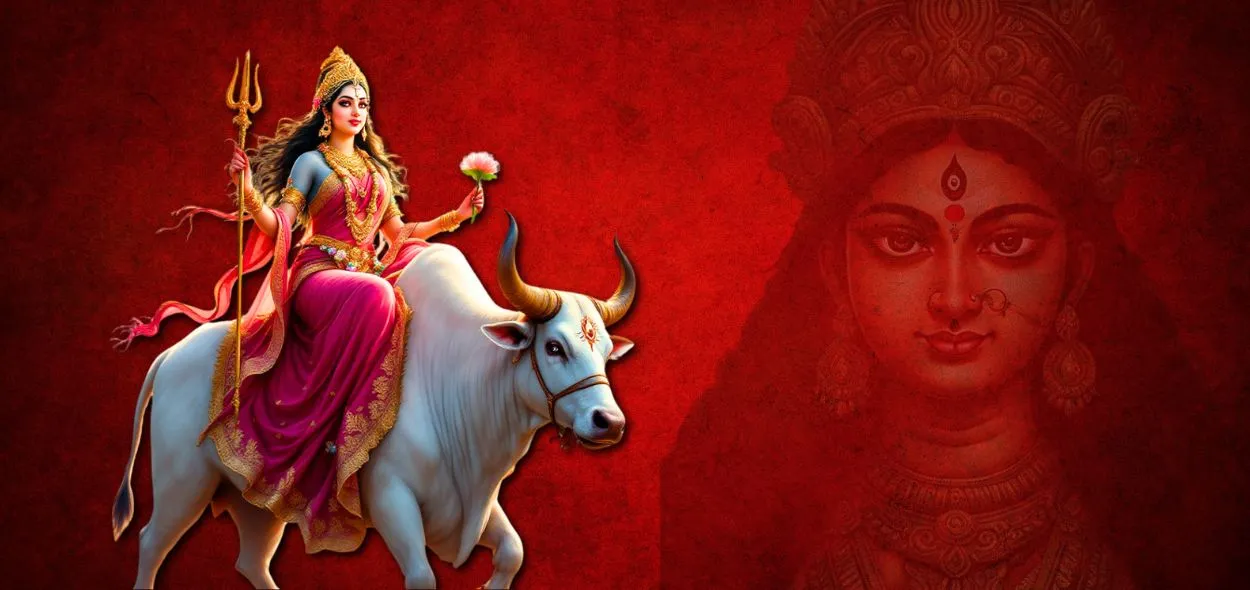
Vidushi Gaur/ New Delhi
Navratri, the nine-day celebration of the Goddess Durga’s arrival on Earth from her celestial abode, is one of the most important festivals of Hindus. The nine-day festival commemorates the battle between Goddess Durga and the invincible demon Mahishasura. On the ninth day, Durga killed the demon whom the Devas (Male Gods) had failed to deal with, and, in desperation, they had approached Goddess for help.
The Festival, therefore, symbolises and celebrates the superiority of feminine divinity, and is a reason for the superior position that Hindu women enjoy.
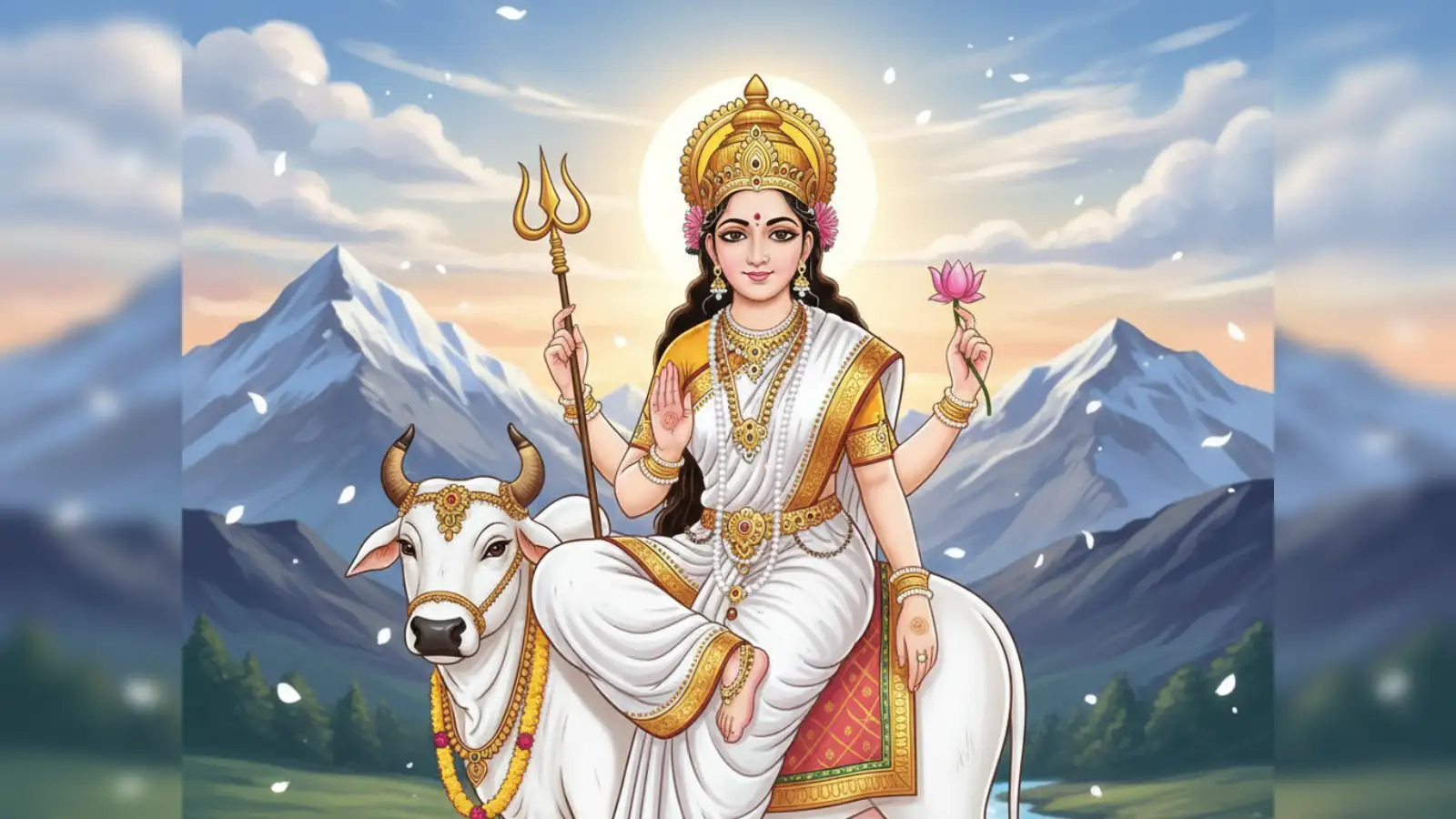 Goddess Shailputri
Goddess Shailputri
The first day of this nine-day festival marks the invocation of Goddess Shailputri, symbolising purity, strength, and devotion. While the festival is dedicated to worshipping the nine forms of Goddess Durga, the opening day sets the spiritual tone, bringing together myth, tradition, and contemporary meaning. At its heart, Navratri is the worship of the feminine divine.
The story of Shailputri
The first day of Navratri is dedicated to Maa Shailputri (literally, “Daughter of the Mountain”). According to Hindu mythology, Shailputri is an incarnation of Goddess Parvati, the daughter of King Himavan, the ruler of the Himalayas. In a previous birth, she was known as Sati, the consort of Lord Shiva. Unable to bear the humiliation of her husband at her father Daksha’s yajna, she immolated herself. In her next birth, she was reborn as Shailputri and later reunited with Shiva.
Iconographically, Shailputri is depicted riding a bull (Nandi), carrying a trident in one hand and a lotus in the other. She represents steadfastness, devotion, and the grounding energies of the Earth. Devotees believe that worshipping her brings strength, patience, and balance in life, qualities needed at the start of a spiritual journey.
Rituals
The ritual of Ghatasthapana (kalash sthapana) is also performed on this day, symbolising the invocation of divine energy. A pot filled with water and grains is installed, topped with a coconut and mango leaves. This becomes the central focus of worship, representing life, prosperity, and the presence of the goddess.
While Navratri is celebrated nationwide, its flavour changes dramatically from region to region.
In northern states like Uttar Pradesh, Punjab, Haryana, and Delhi, Navratri begins with fasting and prayers. Devotees often consume only fruits, milk, and specific grains like kuttu or rajgira flour (milets). Temples are adorned with flowers, bhajans are sung, and the recitation of the Durga Saptashati begins. Many families perform jagrans.
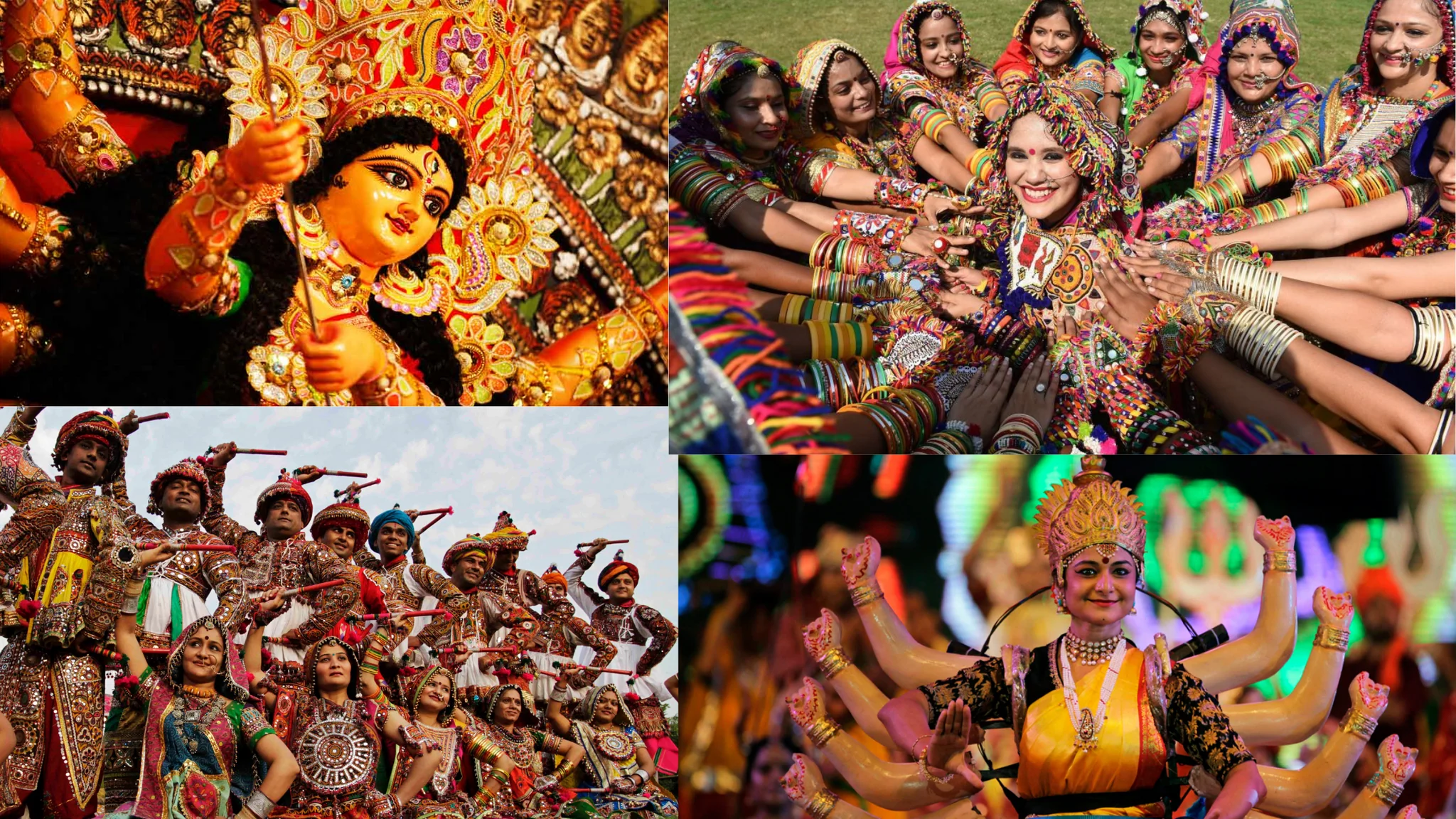 People celebrating Day 1 of Navratri
People celebrating Day 1 of Navratri
Gujarat is synonymous with Navratri’s grand dance festival, Garba and Dandiya Raas. On the first day, people wear traditional attire in shades associated with Shailputri and gather to dance in concentric circles around the decorated earthen pot with a diya symbolising Shakti. In Maharashtra too, ghatasthapana rituals are observed, and women often exchange turmeric and vermilion, symbolising prosperity.
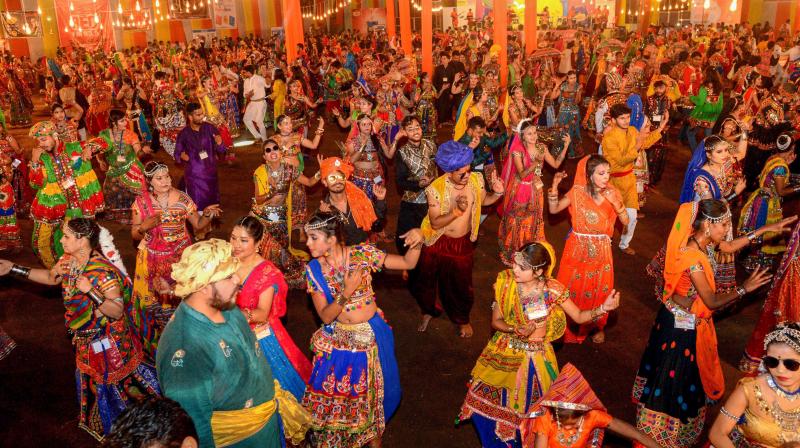 People performing Garba
People performing Garba
In West Bengal, Assam, and Odisha, Navratri overlaps with Durga Puja. Though the grand festivities peak in the final four days, the first day, Mahalaya, is marked by invoking the goddess. Artists craft elaborate idols of Durga, and chants of the Chandi Path fill the air, symbolising her descent to Earth.
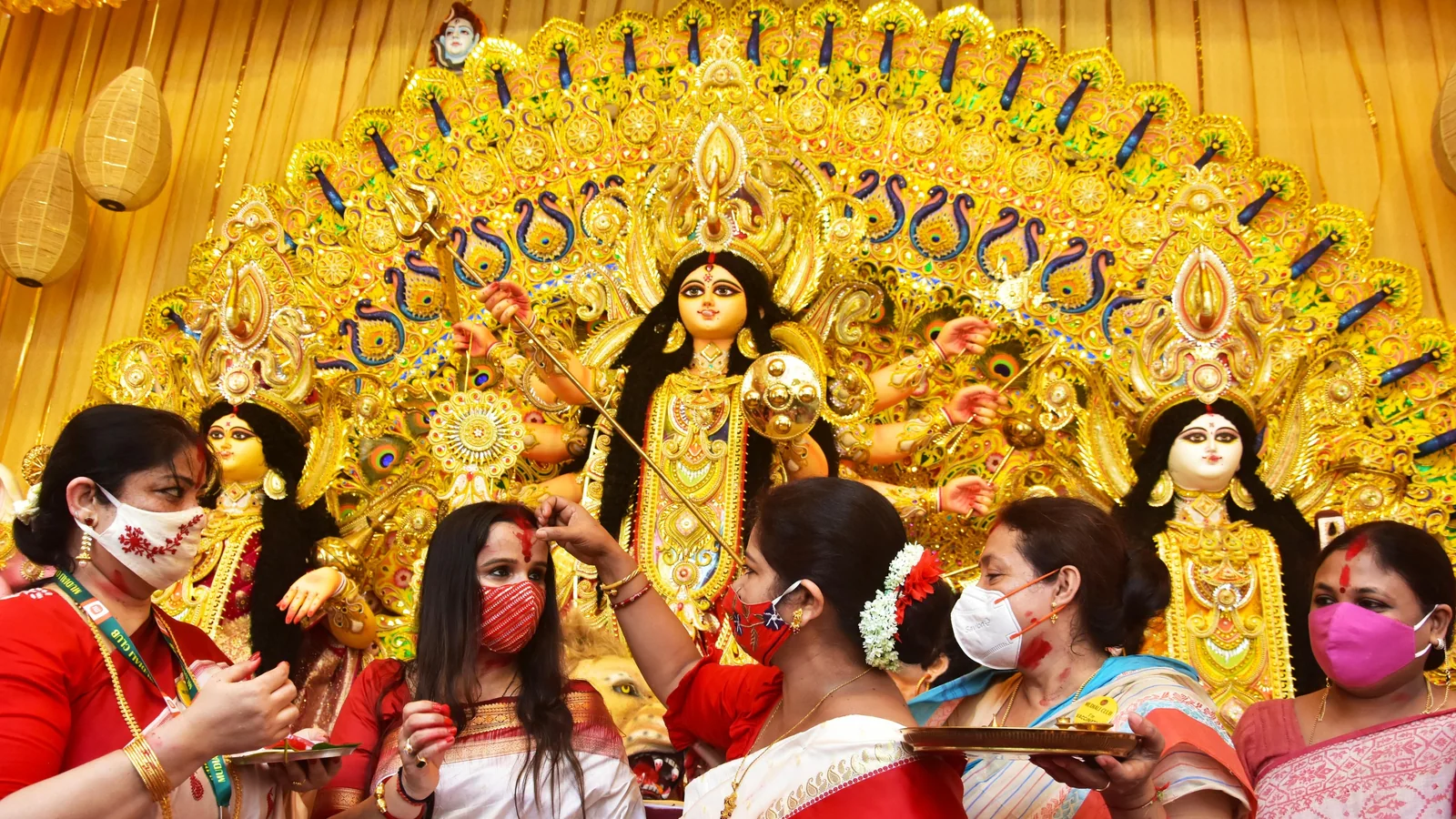 Women celebrating on Durga Puja
Women celebrating on Durga Puja
In Tamil Nadu, Andhra Pradesh, and Karnataka, families set up Golu, artistic displays of dolls and figurines arranged on steps. The first day of Navratri sees the initial prayers to Shailputri, with offerings of flowers, fruits, and traditional delicacies. In Kerala, the festival is linked with Saraswati Puja, and the first day marks the beginning of cultural programs and recitations.
Thus, though the goddess is one, her worship reflects the diversity of India’s traditions, binding the nation in devotion through varied expressions.
The first day’s worship focuses on grounding and new beginnings. Devotees rise early, bathe, wear clean clothes, and install the kalash. They light a lamp, offer red flowers, incense, and special prasad like ghee or sweets. Each offering carries symbolism: red flowers represent energy, ghee signifies purity, and grains symbolize fertility and growth.
Fasting is a key aspect, not just as a ritual but as a practice of discipline and purification. It is believed that abstaining from rich food clears the body and mind, making devotees more receptive to spiritual vibrations.
READ MORE: Shakir Ali revived the miniature painting art of Rajasthan
In contemporary times, Navratri’s first day holds significance beyond ritualistic observances. Just as Shailputri embodies grounding and patience, the day encourages individuals to pause, reset, and begin anew. In a world marked by stress and speed, this symbolism resonates deeply. The focus on fasting, natural foods, and mindful practices aligns with modern wellness trends. Eating sattvic food and meditating during these days contributes to mental and physical health.
